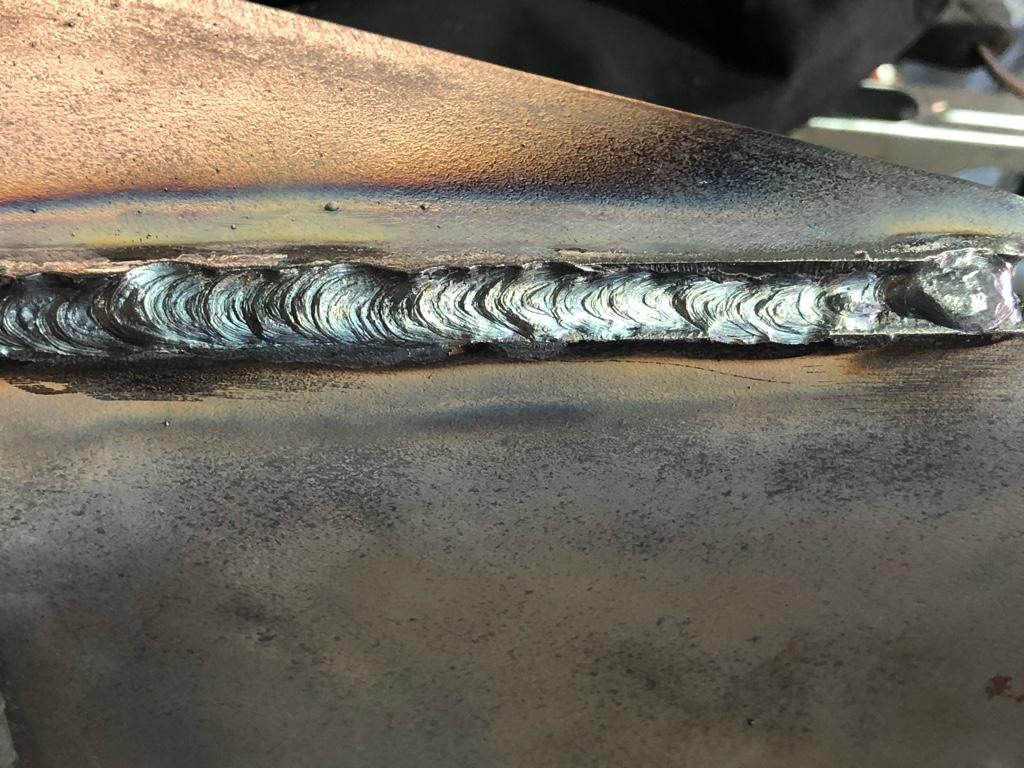Preventing Weld Undercut: Proven Methods Every Welder Ought To Know
Preventing Weld Undercut: Proven Methods Every Welder Ought To Know
Blog Article
Comprehending the Causes and Solutions for Undercut Welding in Steel Manufacture Procedures
In the world of metal construction processes, the incident of undercut welding positions a considerable difficulty that demands an extensive understanding of its causes and practical services. The elaborate interplay of various factors throughout welding procedures can bring about this unwanted sensation, affecting the architectural stability and general quality of the welded joints - Preventing weld undercut. By dissecting the source of undercut welding and checking out reliable restorative procedures, producers can elevate the standard of their workmanship and guarantee the manufacturing of remarkable steel elements
Typical Reasons For Undercut Welding
Often ignored in steel manufacture, undercut welding takes place due to numerous factors that demand meticulous interest and know-how to be properly minimized. In addition, inappropriate welding techniques, such as using the incorrect welding angle or take a trip rate, can additionally add to damage development. The option of welding specifications, such as voltage, present, and cable feed speed, plays a significant role in the occurrence of undercut welding.
Impact of Incorrect Welding Parameters
Inaccurate welding parameters can significantly compromise the honesty and top quality of bonded joints in metal fabrication processes. The influence of wrong welding specifications materializes in different ways, leading to architectural weak points and flaws in the welded components. One critical facet impacted by incorrect welding parameters is the infiltration depth of the weld. Insufficient warmth input as a result of reduced welding currents or excessively high traveling rates can result in inadequate blend between the base metals, bring about incomplete joint penetration and damaged bonds. On the other hand, excessive warmth input triggered by high welding currents or slow traveling speeds can lead to burn-through and too much support, producing a brittle and unpredictable weld structure. In addition, inaccurate criteria such as incorrect voltage setups or inaccurate electrode angles can add to unpredictable weld grain profiles, absence of combination, and increased possibilities of defects like damaging. Therefore, thorough attention to welding criteria is critical to make sure the production of top notch welds with the desired mechanical homes and architectural integrity.
Result of Improper Lantern Angle
Inappropriate lantern angle in welding procedures can dramatically influence the top quality and honesty of the last weld joints in steel fabrication procedures. The lantern angle plays a crucial role in identifying the heat input and distribution during welding. When the lantern angle is wrong, concerns such as damaging can occur. Damaging is a common welding issue where a groove creates along the weld toe, damaging the joint and endangering its structural integrity.
A torch angle that is also high can result in insufficient infiltration, insufficient combination, and increased spatter. On the various other hand, a lantern angle that is too superficial can lead to excessive infiltration, burn-through, and distortion of the base product. Preventing weld undercut. Proper lantern angle is necessary for making sure consistent weld top quality, stamina, and appearance
To avoid undercutting and other flaws brought on by improper lantern angles, welders must be educated to maintain the proper torch angle throughout the welding procedure. Routine monitoring and change of torch angles throughout welding can help attain sound welds with marginal flaws.
Role of Inadequate Welding Methods

One more element of inadequate welding techniques is improper weld prep work. Poor cleansing of the base metals, inaccurate joint design, or insufficient side prep work can all add to undercut welding. Poor protecting gas coverage or using the incorrect type of gas can result in incomplete blend and the formation of undercut defects.
To resolve the function of insufficient welding techniques in steel construction procedures, it is vital to supply extensive training for welders. Correct education and learning on welding parameters, joint prep work, and protecting gas selection can aid avoid undercut welding and ensure top notch welds in metal manufacture jobs.
Effective Solutions for Undercut Welding
Attending to undercut welding in metal manufacture requires applying efficient remedies to improve weld top quality and structural honesty. One of the key services to deal with undercut is to change welding criteria such as voltage, present, and take a trip speed to make sure proper warm input and blend. By fine-tuning these settings, welders can stop too much melting of the base metal and filler product, reducing the probability of undercut development.
Additionally, appropriate joint prep work is essential in stopping undercut. Ensuring clean base steel surface areas free of pollutants and making use of the appropriate bevel angle can help advertise far better weld infiltration and reduce the danger of undercut - Preventing weld undercut. Using see this site ideal welding techniques, such as oscillating the lantern or weaving, can additionally assist in distributing heat uniformly and filling up the weld joint adequately, reducing the possibility of undercut flaws
In addition, picking the correct welding consumables, you could check here including electrodes and filler metals, is vital in alleviating undercut. Making use of products with ideal chemical make-ups and mechanical residential or commercial properties can add to accomplishing sound welds with very little undercut. Routine evaluation and quality assurance steps ought to likewise be executed to discover and attend to undercut problems quickly, guaranteeing the general integrity of fabricated steel parts.

Verdict
Finally, comprehending the causes and solutions for undercut welding in metal manufacture procedures is important for accomplishing top quality welds. By dealing with common reasons such as inaccurate welding specifications, improper torch angle, and poor welding methods, welders can avoid undercutting and make certain solid, resilient welds. It is important to take note of these aspects and carry out effective remedies to enhance the overall welding procedure and final item high quality.

Report this page